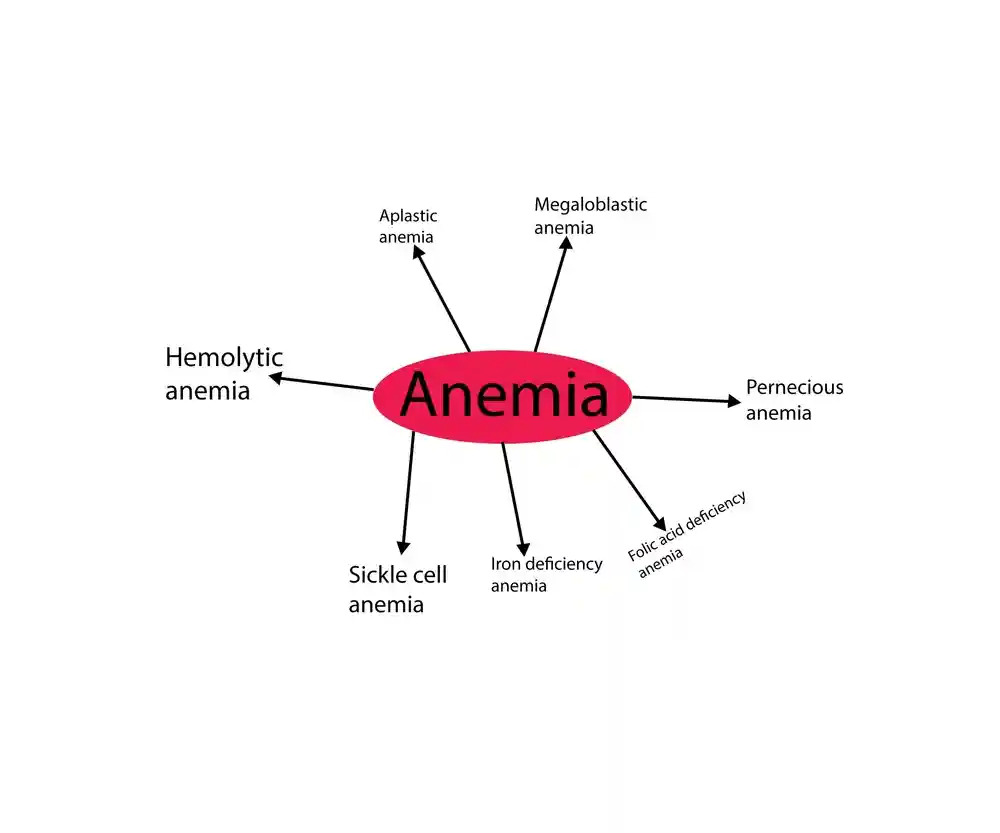Classifying anemias

Anemias are classified according to the size and hemoglobin content of individual red corpuscles into three broad categories:
- Microcytic hypochromic anemia: This means that red cells are smaller than 80 fl in MCV and have a lower hemoglobin concentration than 27 pg. This type of anemia is usually seen in iron deficiency, anemia of chronic illness -the minority of cases- and in lead poisoning. It can also occur due to very slow chronic loss of blood which depletes the body of its iron stores. The other major condition that is characterized by microcytic hypochromic anemia is thalassemia major. It is a hereditary blood disorder due to abnormal hemoglobin protein and is also characterized by abnormal facial features as well as stunted growth and sexual maturity.
- Normocytic normochromic anemia: In this type of anemia, red cells have a normal volume and hemoglobin content, rather the cause of anemia is their decreased numbers. This is usually seen in:
- Acute hemorrhage: Acute hemorrhage whether internal or external causes a drop of red cell count before the bone marrow tries to compensate, which takes days.
- Acute hemolytic anemia: Acute destruction of red cells by autoimmune processes or as a reaction to food or drugs will cause a rapid drop of blood count before the bone marrow replaces them.
- Renal failure: Anemia resulting from renal failure is usually normocytic normochromic due to the drop in the level of erythropoietin which is secreted in the juxtaglomerular apparatus of the kidney.
- Hypothyroidism: Hypothyroidism can, in fact, cause all three types of anemia and normocytic anemia is a common first presentation of the condition. It occurs because thyroid hormone is an important stimulus for erythropoietin production.
- Bone marrow failure and aplastic anemia: When bone marrow fails whether due to cancer, chemotherapy or other drugs, it usually presents with a normocytic normochromic anemia.
- Macrocytic anemia: Macrocytic anemia is when the red cell size is more than 90 fl. It usually means that such cells are immature and were either released prematurely or couldn’t complete their maturation because of a deficiency of a certain nutrient. It is seen in the following cases:
- Vitamin B12 deficiency: This type of anemia is called pernicious anemia and results from dietary deficiency of vitamin B12. Vitamin B12 is necessary for the production of DNA and its deficiency can affect cellular maturation. This vitamin is very poor in plant sources and is usually found in meat, poultry, eggs and dairy products. It can also occur in some conditions of the stomach if a certain protein called intrinsic factor is not produced since it is necessary for the absorption of vitamin B12.
- Folic acid deficiency: Folic acid is essential for DNA formation and its deficiency causes lack of maturation of cells and the development of macrocytic anemia. Folic acid deficiency is usually dietary.
- Reticulocytosis: As mentioned above, any cause of increased reticulocyte count will cause increased MCV and macrocytic anemia.
- Liver diseases: Liver disease can cause increased cholesterol deposition on red cells causing their volume to increase. The liver can also cause anemia due to depleted stores of iron, concomitant affection of the kidney, chronic bleeding because of portal hypertension and impaired coagulation, and vitamin deficiencies.
- Alcohol abuse: Alcohol has a direct toxic effect on the bone marrow and also decreases the absorption of vitamin B12.
